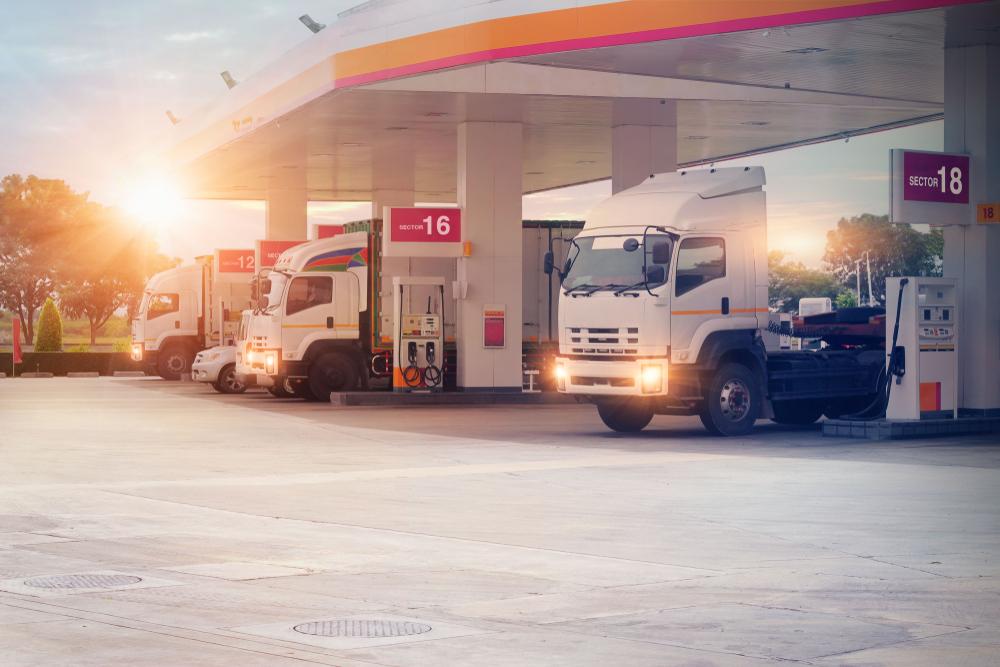Ways to save on gas can help you preserve your hard-earned money while driving a truck to or for work. Even though diesel engines are more fuel efficient than gasoline vehicles and capable of hauling heavy loads even from rest, diesel fuel costs around $1 more per gallon than gasoline due to rising fuel costs and the changing geoeconomic landscape. If you want to save on gas with a diesel engine, you need to understand how these vehicles maintain fuel efficiency.
It all starts when you turn on the ignition. This sends air and fuel to the combustion chamber. The energy created through the combustion process creates mechanical energy, which is then transferred to the wheels. But several steps need to happen simultaneously for the engine to run. The high-pressure oil pump (HPOP) pressurizes the oil before sending it to the fuel injectors that fire directly into the combustion chamber. If anything goes wrong along the way, fuel efficiency will diminish. The best thing you can do to maximize your mpg is to maintain the various components that power the engine. Pay attention to the oil pressure readings on the internal sensor and change the oil regularly to keep the fuel injectors firing at maximum efficiency. Replace the HPOP if the pressure remains low.
Not changing your oil or using poor quality oil will only clog the fuel injectors due to excess particulate matter. Use diesel fuel injector cleaner to clear away this debris and replace worn fuel system parts as they age. Every diesel engine is made up of tens of thousands of individual parts and components, many of which can malfunction after years of heavy towing. If any one of them breaks down, you will likely end up burning through more fuel than necessary, which can spread fuel deposits throughout the engine. Shop for diesel truck parts online to save money on repairs and maintenance. If everything is working properly, the next best thing you can do to improve fuel efficiency is to change the way you drive. Old habits die hard, but every mistake will cost you in the long run.
Table of Contents
Limit Idling and Warm Up Time
It might be tempting to let the engine run before you’re ready to hit the road, but it’s just a waste of money. You don’t need that much time to warm up the engine — even in the winter. It should only take 15 seconds or less for the glow plugs to heat the air and fuel. If it still doesn’t start, there could be a problem with the fuel system or heating component.
Source: CC7/Shutterstock.com
Take Advantage of Shore Power
If you think you need to idle to run your electronics, think again. It’s like paying a premium at a café just to use the outlet. Most truck/rest stops in the U.S. now offer what’s known as shore power. Plug into the grid to use an air conditioner, heater, microwave, refrigerator and other 120-volt appliances without idling.
Increase Your Following Distance
Hitting the brakes will only waste the energy you’re paying to produce, so avoid using them unless you need to come to a stop or drastically reduce your speed. Leave more room in between you and the next closest vehicle, so you don’t have to hit the brakes every time they slow down. Take your foot off the accelerator to reduce speed before engaging the brake.
Reduce Your High Speed
Going over 55 miles per hour will only sap your fuel efficiency, so slow down on long trips and give yourself more time to reach your destination. If you’re on the clock or need to meet a deadline, find routes that require as few stops as possible, including traffic lights and congested roads that force you to slow down. Your truck will be most efficient when you get into the peak torque zone, which usually happens right around the 55-mph mark.
Source: Vitpho/Shutterstock.com
Use Cruise Control
Use cruise control to maintain a consistent speed while giving your foot a break. Avoid pressing down on the accelerator when you’re not in cruise control unless you need to get uphill. Ease off the accelerator as you approach the top of the hill to let the momentum carry you over.
Go Out on a High Note
If you need to stop and plan on turning the engine off for several minutes or more, try to land at a truck or rest stop on a hill or elevated area. Trying to go uphill from rest will consume the most fuel, but if you are already at the top, you can easily coast your way back down once you’re ready to get back on the road.
Also Read : 5 Reasons to Rent a Car in Punta Cana
Research Local Prices
The price of fuel ranges dramatically based on where you buy it. If you have a choice in terms of where and when you refuel, use an app like GasBuddy to find the lowest prices in your area. Every cent per gallon can make a difference as long as you don’t have to go too far out of your way to get there.
Every decision you make behind the wheel can affect how much fuel you consume. If you maintain your engine and practice good driving habits, you will gradually reduce your fuel costs to help you keep more of your money.
